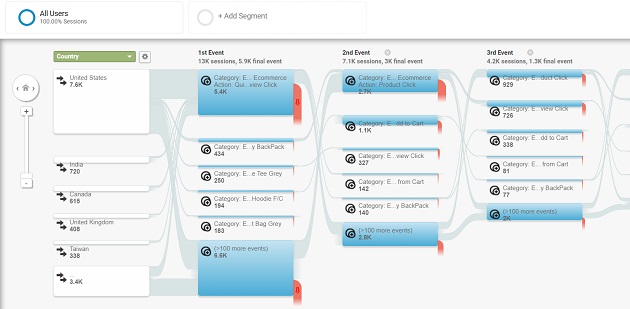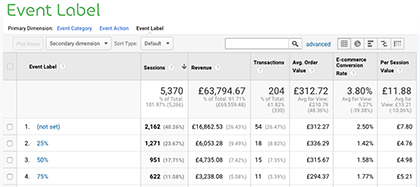Rumored Buzz on Google Analytics Event Tracking
Wiki Article
The 2-Minute Rule for Google Analytics Event Tracking
Table of ContentsGetting My Google Analytics Event Tracking To WorkThe Greatest Guide To Google Analytics Event TrackingThe 6-Second Trick For Google Analytics Event TrackingThe Best Strategy To Use For Google Analytics Event TrackingThe Best Strategy To Use For Google Analytics Event TrackingThe 7-Minute Rule for Google Analytics Event Tracking

If you're mosting likely to establish event tracking by hand, then you're mosting likely to need to add some added code to the aspects you desire to accumulate data from. The code you're going to deal with will look something like this: There are 4 components within that code snippet that you're mosting likely to require to define on your own: occasion, Group, occasion, Action, occasion, Tag and event, Worth.
As you can see, two of these are required (classification and action) while label and value are optional. All of it depends on the kind of information you want passed on back to Google Analytics when a customer clicks the defined aspect (Google Analytics Event Tracking). It will be much less complicated to specify these components if you analyse your site and make a decision which elements/actions you wish to track
How Google Analytics Event Tracking can Save You Time, Stress, and Money.
Now, you'll be asked to specify the and and you'll want to select from the drop-down menu that shows up when you click on. This will certainly bring up the very same event tracking elements we looked at earlier, which you'll require to complete. Once you have actually specified these, you can move down to the 2nd box and select the trigger that will certainly discharge your tag.On the following display, you'll also have an area for calling your trigger and, if you click the box, you'll see a list of the various triggers you can choose. In this case, we want to choose and then select the option below. You'll set the trigger to only terminate when a component is clicked with an URL that contains the.
Simple - Event monitoring! Event monitoring offers you a photo of just how users engage with your site and service. Review on as we check out every little thing you need to know, including what it is, why you ought to track occasions, how to manage events data, and other relevant Frequently asked questions you may have.
More About Google Analytics Event Tracking
You can switch over in between your event classifications, activities, and labels in the Leading Events report. This Find Out More record is essential for digging better right into research on a details occasion classification. The Occasion Pages record displays the web pages where occasions are triggered. In this area, we can examine the leading web pages that drive events.Occasions in Google Analytics have 4 primary elements. Google Analytics uses these codes to track user communications and team click to read more them right into occasion records (Google Analytics Event Tracking).
A checklist of the criteria you can track on your website is on the. After examining all essential areas, you can click "X" to shut the home window and return to the Review menu on the.
Google Analytics Event Tracking for Beginners

If you have not done so, you may require to set up a variable in the Google Analytics Setups box. After this, enter your GA tracking ID in the Monitoring ID field.
Your ID will get on top of the screen. To do this, follow the following collection of activities: After configuring the fields, pick the "Triggering" section. When configuring your brand-new trigger, click the "+" switch, then the "pencil" switch, then select your trigger kind. Label your trigger and define the conditions that lead to activate shooting.
4 Easy Facts About Google Analytics Event Tracking Explained

When it comes to knowing which areas and elements are leading consumers with your conversion funnel, you still won't recognize. So, without event tracking, GA records will just count gos to as check out this site single-page sessions, also if individuals spend a whole lot of time on one page and engage with it considerably (and a bounce).
How does occasion monitoring attain this?Single-web page sessions understood as bounces begin and wrap up on the exact same page. Without event tracking, GA will identify a user's visit as a bounce if they don't navigate to an additional web page, no matter exactly how they interact with it. For example, a video-rich web page can have a greater bounce rate if events are not tracked.
How Google Analytics Event Tracking can Save You Time, Stress, and Money.
For GA to take event hits right into account when measuring bounce prices, you must select "Non-interaction occasion" as "False" throughout the GTM configuration. Setting "event goals" with event action is an outstanding method to keep track of individual tasks you value extremely, such as brand-new lead submissions or click a telephone call to action.Report this wiki page